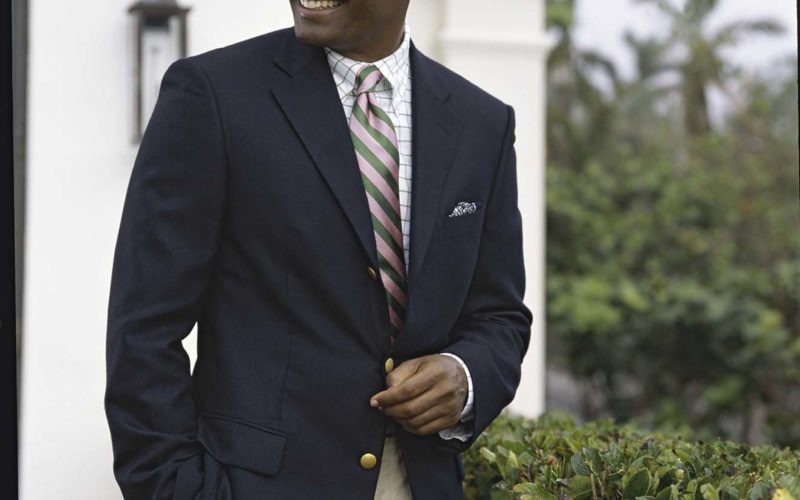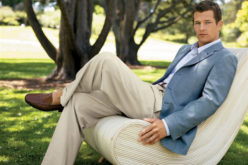Q. I’ve been reading your column regularly for more than 10 years. Now I have a question. Although I have a few navy blazers, I recently purchased another one that has brown leather buttons instead of the traditional brass ones. But I don’t want to look like I’m wearing the jacket to a blue suit when I wear my blazer. Are the brown buttons acceptable and/or stylish, or should I switch them with the traditional brass ones?
A. Your new purchase of a blue blazer without brass buttons is a great style decision. Don’t lose your nerve and feel you must revert to the traditional preppy/naval look that everyone is used to.
I always believe a navy blazer is a must-have item in every man’s wardrobe. It is a versatile garment that can take you to many occasions and help you to feel confident. Because it is so useful, many men own more than one. Each can have a somewhat different purpose and, in recent years, it has become even more of a mainstay. It has also picked up some new variations. Today’s well-dressed guy might wear it for semi-dressy occasions, for business casual, or for blue-jean casual. It’s a staple that can go in many directions – up or down – depending on the fabric, the cut, the shirt it covers, and, yes, the buttons.
Fabrics and textures range from cashmere and fine worsted wool, to nubby hopsacking, and smooth cotton. The cut can be single- or double-breasted with a single back vent or double British vents. Lapels can be either notched or, for the more fashion-forward dresser, peaked. The closing is most often two-button, or perhaps one-button styling
The buttons are the most obvious, noticeable elements. They can provide a note of dash and style.
- Brass is the traditional standard.
- Genuine horn and also plastic buttons come in navy, black, or brown.
- Leather usually comes in brown, as on the jacket you purchased.
- Unique enamel buttons (often with crests or monograms) or silvery-toned pewter can add a distinctive custom note.
- Dark buttons project an air of dressiness to your blazer: navy or black are the most dressy; brown is more casual and more unusual.
In terms of what you pair your blazer with, the basic navy blazer with brass buttons – the most conservative choice – goes with gray flannel trousers or khaki (and occasionally white) cotton pants. Historically, it is a slightly casual outgrowth of the original design worn by yachtsmen. A navy blazer with brown buttons works well with dress pants in khaki or taupe (especially with shoes in the brown family). And for a natty Palm Beach or Newport look, I often suggest having a tailor substitute white pearl buttons after Memorial Day and until Labor Day. Of course, not every guy would like this look or care enough to be bothered taking them back to the tailor when summer ends.
Your choice of shirt under the blazer offers unlimited possibilities: dressy French-cuffed broadcloths, Oxford cloth solid-color button-downs, subtle or bold stripes, short-sleeved polos, as well as turtlenecks. A contrasting V-neck sweater vest is another option for layering.
The best way to assure that your navy blazer won’t look as if it’s the jacket to a blue suit is to wear it with any color pants other than navy, such as gray, khaki, olive, off-white wool, white cotton “duck,” and either white or blue jeans.
With prices all over the map (from $100 to $4,000), another navy blazer is a wise investment and the buttons are a personal choice . . . based, of course, on the advice provided above.
Please send your men’s dress and grooming questions to
MALE CALL: Lois.Fenton@prodigy.net









